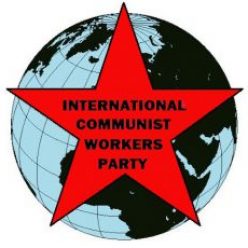The Working-Class, Its Communist Party and the Dictatorship of the Proletariat
Lenin wrote The State and Revolution in August-September 1917. Our last article summarized the reasoning behind its conclusion that the working class needed to lead the masses to destroy the capitalist state. It would need its own “special repressive force” (state) to suppress the old exploitative classes. This is sometimes called the “dictatorship of the proletariat.”
Lenin foresaw “a tremendous abundance and variety of political forms” of this proletarian dictatorship. But he thought the moment for revolution had come. He needed to make a plan.
His plan was mainly based on the 1871 Paris Commune. That was the first time the working class anywhere seized and tried to hold power. We should all study it and draw our own conclusions, based on our line of mobilizing masses directly for communism.
From the Commune to Soviet Power
“One thing especially was proved by the Commune,” said Marx and Engels, “that the working class cannot simply lay hold of the ready-made state machinery and wield it for its own purposes.”
The Commune was the form “at last discovered” by the proletarian revolution to smash and replace the bourgeois (capitalist) state machine. It would make possible “the economic emancipation of labor.”
“The Commune was to be a working, not a parliamentary, body.” Its members “have to work, have to execute their own laws, have themselves to test the results achieved in reality, and to account directly to their constituents.”
Its leaders were elected by direct universal suffrage and subject to recall. They would get regular workers’ wages. In Engels’ and Lenin’s view, this “consistent democracy, on the one hand, is transformed into socialism and, on the other, demands socialism.”
Here is perhaps our biggest disagreement with their line on the Commune. We mobilize to end the wage system and everything associated with it. Instead of fighting for socialism and its “consistent democracy” we will organize society on communist principles whenever and wherever we lead masses to take power.
We have concluded this from studying the development of socialism in the Soviet Union and elsewhere, which reveal it as a form of capitalism. We have also learned huge lessons from the Great Proletarian Cultural Revolution in China (1965-68). One is that the process of building the communist party and strengthening it through criticism and self-criticism will replace “direct suffrage” and “recall.”
The Paris Commune envisioned the formation of a nationwide, centralized network of communes. This goal was cut short by the Commune’s fatal error: It did not suppress the bourgeoisie and crush their resistance with sufficient determination.
Lenin indicated that the Soviets of Workers’, Peasants and Soldiers’ Deputies should model themselves on the Paris Commune. Bolshevik majorities in the Leningrad and Moscow Soviets could lead the way.
The Role of the Communist Party
Marxists saw political parties as representing specific social classes. The Kadets (Constitutional Democrats) represented the bourgeoisie. The Social-Revolutionaries represented the peasantry. The Bolsheviks had won the leadership of the urban working class.
So when Lenin talked about the working class taking political power, he was speaking concretely about the Communist Party (Bolshevik). His readers would have understood that.
He did say this:
“By educating the workers’ party, Marxism educates the vanguard of the proletariat, capable of assuming power and leading the whole people to socialism, of directing and organizing the new system, of being the teacher, the guide, the leader of all the working and exploited people in organizing their social life without the bourgeoisie and against the bourgeoisie.”
The Party is the vanguard of the proletariat. It can take power and lead masses to socialism. It can “direct and organize” the new system. It can lead the masses to organize themselves as the new society.
Lenin wrote “Can the Bolsheviks Retain State Power?” on October 1, 1917. Responding to skeptics, he said:
“Since the 1905 revolution, Russia has been governed by 130,000 landowners, who have perpetrated endless violence against 150,000,000 people, heaped unconstrained abuse upon them, and condemned the vast majority to inhuman toil and semi-starvation.
“Yet we are told that the 240,000 members of the Bolshevik Party will not be able to govern Russia, govern her in the interests of the poor and against the rich. These 240,000 are already backed by no less than a million votes of the adult population.”
The Bolshevik Party – not the Constituent Assembly, not even the Soviets – should prepare to “govern Russia.” And yet Lenin wrote that “we cannot imagine democracy, even proletarian democracy, without representative institutions.” This was a contradiction that neither he nor his party could resolve. Not in theory, not in practice. Not without the line of mobilizing the masses directly for communism.

Front page of this issue

